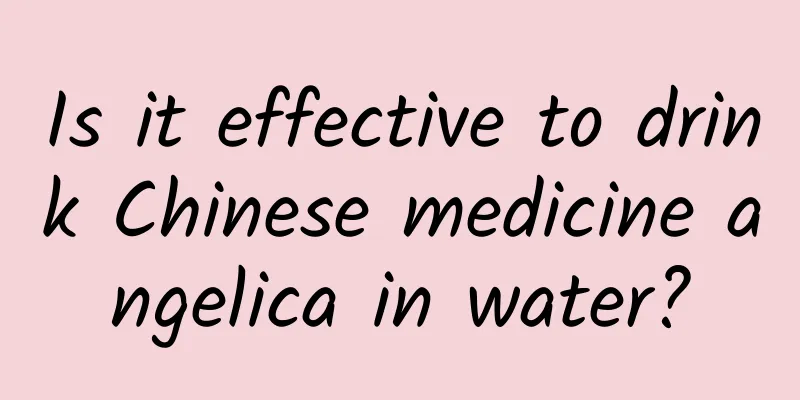The efficacy and function of prickly pear cactus

|
Recently, major TV channels have launched various health programs, and food programs have also introduced special health-preserving dietary therapy methods. All aspects show that the concept of health preservation is gradually deepening in people's understanding. Next, we will introduce a health-preserving medicinal material, prickly pear cactus. [Other names] Cactus, king tree, flame, cactus, Indian fig [Source] Medicinal material source: The roots and stems of the Cactaceae plant Opuntia ficus indica. [Original form] Shrub to tree-like. The stem nodes are oblong to spoon-shaped, 20-60cm long, thick and flat, and bluish-pink. The small nests on the nodes of wild plants have 1-5 white or light yellow developing thorns. The thorns of greenhouse-cultivated plants are often degenerate, thornless or with white hair-like thorns, and the barbs fall off early. The flowers are yellow to orange-yellow, 7-10cm in diameter; the receptacle is obovate, rounded at the base, with numerous nestlets; the petals are oblong, with a pointed tip. The berries are obovate-oval, 5-9cm long, with a concave tip, and are red, purple, yellow or white, depending on the variety; they are edible. 【Habitat distribution】 Mostly cultivated. Distributed in Fujian, Taiwan, Guangdong, Guangxi, Sichuan, Yunnan and other regions. [Chemical composition] The leafy stems contain mescaline, tyra-mine and N-methyltyramine. The stem sap contains galactose (D-galactose), xylose (D-xylose), arabinose (L-arabinose), rhamnose (L-rhamnose) and galacturonic acid (D-galacturonic acid). The polysaccharide extracted from the stem is separated into a neutral part composed of two glucans and a glycoprotein containing arabinose and galactose. All four acidic fractions contain galacturonic acid, arabinose, rhamnose, galactose and xylose in varying proportions. [Pharmacological action] Experiments on normal volunteers have shown that although 10.1±0.3g of this extract cannot lower the blood sugar of patients with type 2 diabetes, it can significantly reduce the increase in blood sugar caused by sugar load in normal volunteers (taking 74g of sugar). However, the plant of the same genus, Opuntia stneptacantha, showed significant hypoglycemic effects in a variety of animal models. 【Nature and flavor】 Bitter; cold 【Entry into Meridians】 Spleen; Lung Meridian 【Functions and indications】 Clears the lungs and relieves cough; cools the blood and detoxifies. It is used to treat lung heat cough, hemoptysis due to pulmonary tuberculosis, dysentery, hemorrhoidal bleeding, breast abscess, mumps, carbuncle, swelling and infection, burns, baldness, scabies, and snake and insect bites. [Usage and Dosage] For oral use: decoction, 15-30g; or mash into juice. For external use: take appropriate amount and mash it for application; or grind the dry product into powder and apply it. 【Excerpt】 Chinese Materia Medica Based on the above summary, the pear cactus still has certain pharmacological effects. What needs to be noted is that the pear cactus should be consumed according to one's actual situation and not in excess. |
<<: The efficacy and function of neem leaves
>>: The efficacy and function of Ficus pear
Recommend
Watching the ice tongue from the edge of the abyss is like peeking into the underworld from the edge of the Naihe Bridge.
Editor’s Note: Scientific expedition travel notes...
Benefits of Alfalfa
Alfalfa, as a health-care herb, has actually beco...
A drunk man slept in this position all night, and when he woke up he was sent directly to the ICU and had "magic lungs"...
On the morning of March 26, a 31-year-old man was...
What are the effects of inverted grass
In fact, the inverted grass is also a kind of tra...
The efficacy and function of silver purple salvia miltiorrhiza
As a traditional Chinese medicine, Salvia miltior...
Across 4,600 kilometers! Space-ground integrated quantum communication
The space-ground integrated quantum communication...
China's longest wooden arch bridge burned down and collapsed. What are the key points of fire prevention for cultural relics and ancient buildings?
Sad! Wan'an Bridge, the longest existing wood...
Commemorating the 100th Anniversary of Huang Weiyuan's Birth丨The needs of the country are my subject
Academician Huang Weiyuan: The needs of the count...
What is the difference between 2 yuan and 20 yuan of salt? Choosing the wrong one can really affect your health
If there is one indispensable condiment in the ki...
The efficacy and function of Coriolus mulberry leaves
Since Chinese medicine has fewer side effects, mo...
What are the effects and functions of ginseng dripping pills
Ginseng drops can effectively delay the aging of ...
The efficacy and function of yellow flower garlic
Garlic with yellow flowers is a very common Chine...
The efficacy and function of oxytocin
I don’t know if you are familiar with the herb an...
How to make a perfect Laba garlic?
"Little kids, don't be greedy, after Lab...
The efficacy and function of Fushen
Fosun ginseng is a famous traditional commonly us...









